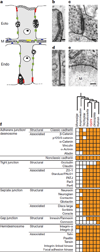The dynamic genome of Hydra
- PMID: 20228792
- PMCID: PMC4479502
- DOI: 10.1038/nature08830
The dynamic genome of Hydra
Abstract
The freshwater cnidarian Hydra was first described in 1702 and has been the object of study for 300 years. Experimental studies of Hydra between 1736 and 1744 culminated in the discovery of asexual reproduction of an animal by budding, the first description of regeneration in an animal, and successful transplantation of tissue between animals. Today, Hydra is an important model for studies of axial patterning, stem cell biology and regeneration. Here we report the genome of Hydra magnipapillata and compare it to the genomes of the anthozoan Nematostella vectensis and other animals. The Hydra genome has been shaped by bursts of transposable element expansion, horizontal gene transfer, trans-splicing, and simplification of gene structure and gene content that parallel simplification of the Hydra life cycle. We also report the sequence of the genome of a novel bacterium stably associated with H. magnipapillata. Comparisons of the Hydra genome to the genomes of other animals shed light on the evolution of epithelia, contractile tissues, developmentally regulated transcription factors, the Spemann-Mangold organizer, pluripotency genes and the neuromuscular junction.
Conflict of interest statement
The authors declare no competing financial interests.
Figures



References
-
- van Leeuwenhoek A. In: The Collected Letters of Antoni van Leeuwenhoek. Palm LC, editor. XIV. Swets and Zeitlinger; 1996. pp. 169–173.
-
- Trembley A. Mémoires, pour servir à l’historie d’un genre de polypes d’eau douce, à bras en forme de cornes. Jean and Herman Verbeek; 1744.
-
- Bode PM, Bode HR. In: Pattern Formation, A Primer in Developmental Biology. Malacinski GM, Bryant SV, editors. Macmillan; 1984. pp. 213–241.
-
- David CN, Murphy S. Characterization of interstitial stem cells in Hydra by cloning. Dev. Biol. 1977;58:372–383. - PubMed
-
- Holstein TW, Hobmayer E, Technau U. Cnidarians: an evolutionarily conserved model system for regeneration? Dev. Dyn. 2003;226:257–267. - PubMed
Publication types
MeSH terms
Substances
Associated data
- Actions
- Actions
- Actions
- Actions
- Actions
- Actions
- Actions
- Actions
Grants and funding
LinkOut - more resources
Full Text Sources
Molecular Biology Databases

